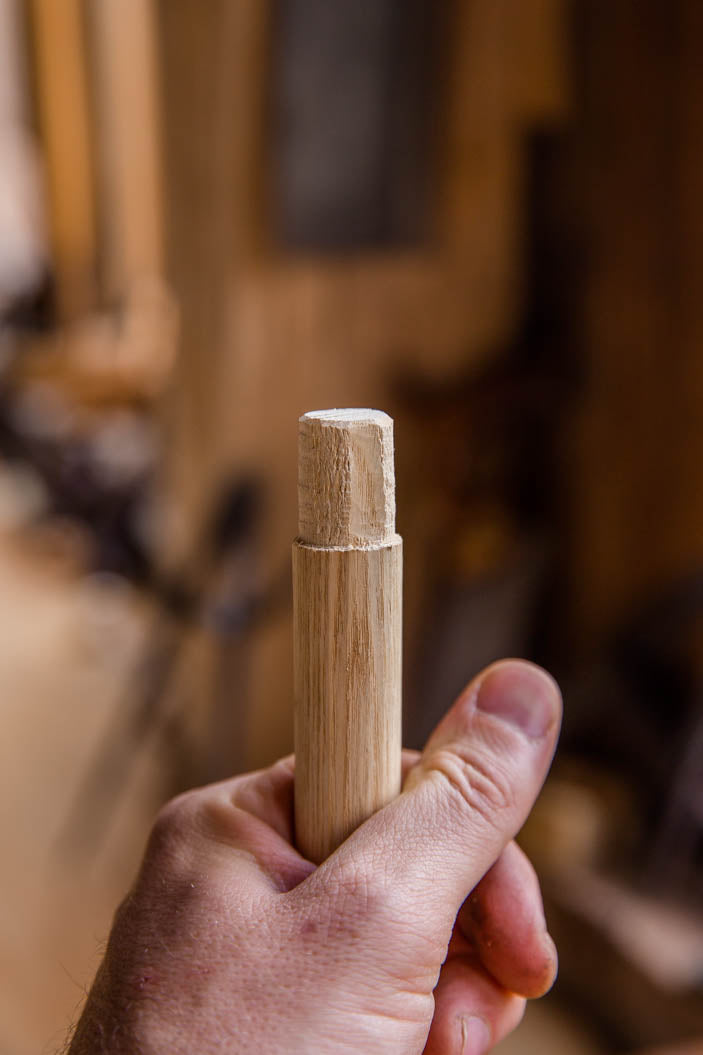
An excerpt from Joshua Klein’s forthcoming book, Joined: A Bench Guide to Furniture Joinery:

“Now, your tenon is bigger than the mortise, and that’s good – but you don’t want to split the leg when you drive it. Carve shallow flats on the two sides perpendicular to the grain orientation of the leg (i.e. the “sides” of the tenon, not the “top” and “bottom”). This sideways relief ensures that your tenon doesn’t act as a wedge, splitting the leg apart. This was a common historical practice.

Brush a little hide glue in the mortise and then dip the end of the tenon in hide glue.

Drive it in. Hard. This joint is a serious mechanical lock so it ought to be a bear to assemble. If you’re not scared the first few times doing this, it’s not tight enough. One period chairmaker recorded a particular day’s shop work with this intriguing note: “Worked upon a chair; broke it putting it together. Began another.” Period chairmaking is not for the milquetoast.
It goes without saying: You’ll want to make a handful of mock-ups before attempting this maneuver on an actual chair project.

The proper amount of glue will yield a small bead of squeeze-out. Let the squeeze-out gel and roll it off the surface without smearing it into the wood. If it accidentally smears, wipe it down with warm water.”
This book should be done at the printer next week! You can pre-order your copy here: https://www.mortiseandtenonmag.com/collections/books/products/joined-a-bench-guide-to-furniture-joinery-book

